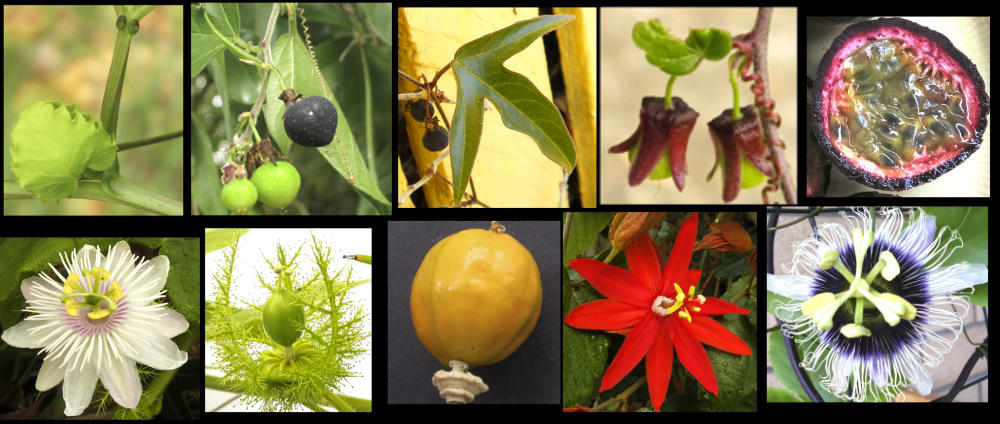Passifloraceae – Passionfruit family.
Figures for the number of genera range from 12 to 36.
There are 530 to about 600 species with most in the genus Passiflora.
There are up to 1,000 synonyms.
The majority are tendril climbing vines but there are a few shrubs and trees to 15 m high.
The alternate leaves, on petioles, are in a spiral.
The blades can be simple or dissected.
Stipules are sometimes present.
There are often nectaries on the petioles, stipules and tendrils.
There are various types of hairs including simple and glandular.
Axillary inflorescences are large flowers either solitary or in clusters.
There are usually 3 bracts below the uni- or bi-sexual flowers.
Most species have a hypanthium formed by the fused bases of the sepals and petals.
There is often an androgynophore (a stalk holding the ovary and stamens) or a gynophore.
Some species have a hypogynous disc.
There are 5 (3 – 8) sepals and petals sometimes with the bases fused.
Sepals remain on the fruit.
Occasionally there are no petals.
There are 5 (4 – many) stamens that are separate or joined at the base.
They may be attached to a gynophore.
The dorsifixed anthers open inwards via longitudinal slits.
Internal to the petals is a corona of up to 50 staminodes (infertile stamens).
They can be outside, between or inside the fertile stamens.
They are usually on the top of the hypanthium.
They can be petal-like, filamentous, scaly or in the form of a disc around the female parts.
The ovary, with 3 (2 – 5) carpels, is almost always superior.
It is commonly on a stalk (gynophore).
It has 1 locule and numerous ovules with parietal placentation.
There are 3 (2 – 5) styles that are free or joined at the base.
The fruit are berries or 3-chambered, loculicidal capsules.
J.F.


